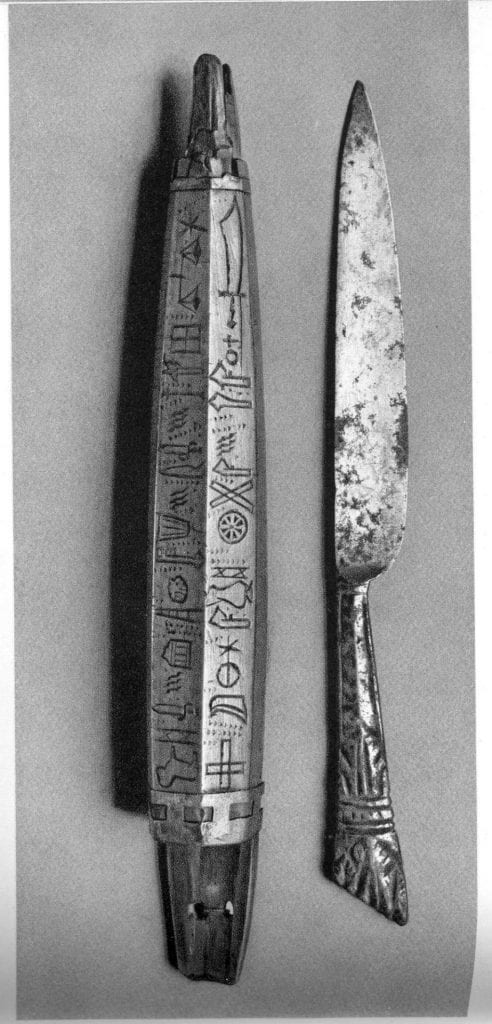In Vincent’s time, people normally had their own eating utensils. To pick up and eat their food, many used their fingers, which they would clean with a cloth and/or bread. As to the utensils, normally a knife and spoon—forks were a new import from Italy, often used only in upper-class settings—these were also cleaned at the table by the eater and wrapped up in a cloth to await their next use. This was a custom preserved in some religious communities, notably the Daughters of Charity in certain parts of the world.
The knife pictured above is in the Vincentian Museum in the mother house in Paris. It consists of a wooden sheath, on the left, with the metal knife, on the right. The sheath has metal pieces fitted into it at each end to hold the wood in place.
The mystery about this item is the carving on the sheath, which covers at least two sides. I have not been able to locate anyone who knows anything about this. What do the individual symbols mean, if anything? Who carved them and why? Where did the sheath come from? Why did Vincent de Paul have this item? What is its age? How different was it from those that others used? Was it a gift to him from someone, let’s say a sailor, coming back from a lengthy ocean voyage, maybe from Madagascar? Are the figures alphabetic or just symbolic? Some symbols are repeated, and there may be divisions between groups of symbols (if I am interpreting the vertical dots correctly); does this have any relevance?
Let’s put out this item for examination. There has to be someone who could start researchers in the right direction. Is it you?
I sometimes wonder whether the author Dan Brown could concoct a mystery story featuring this knife, leading scientists and detectives on a wild chase across continents.
